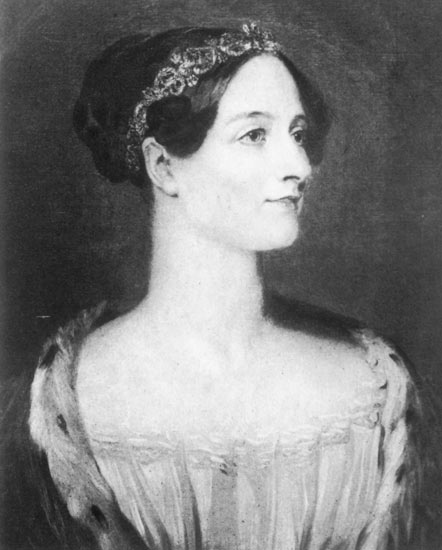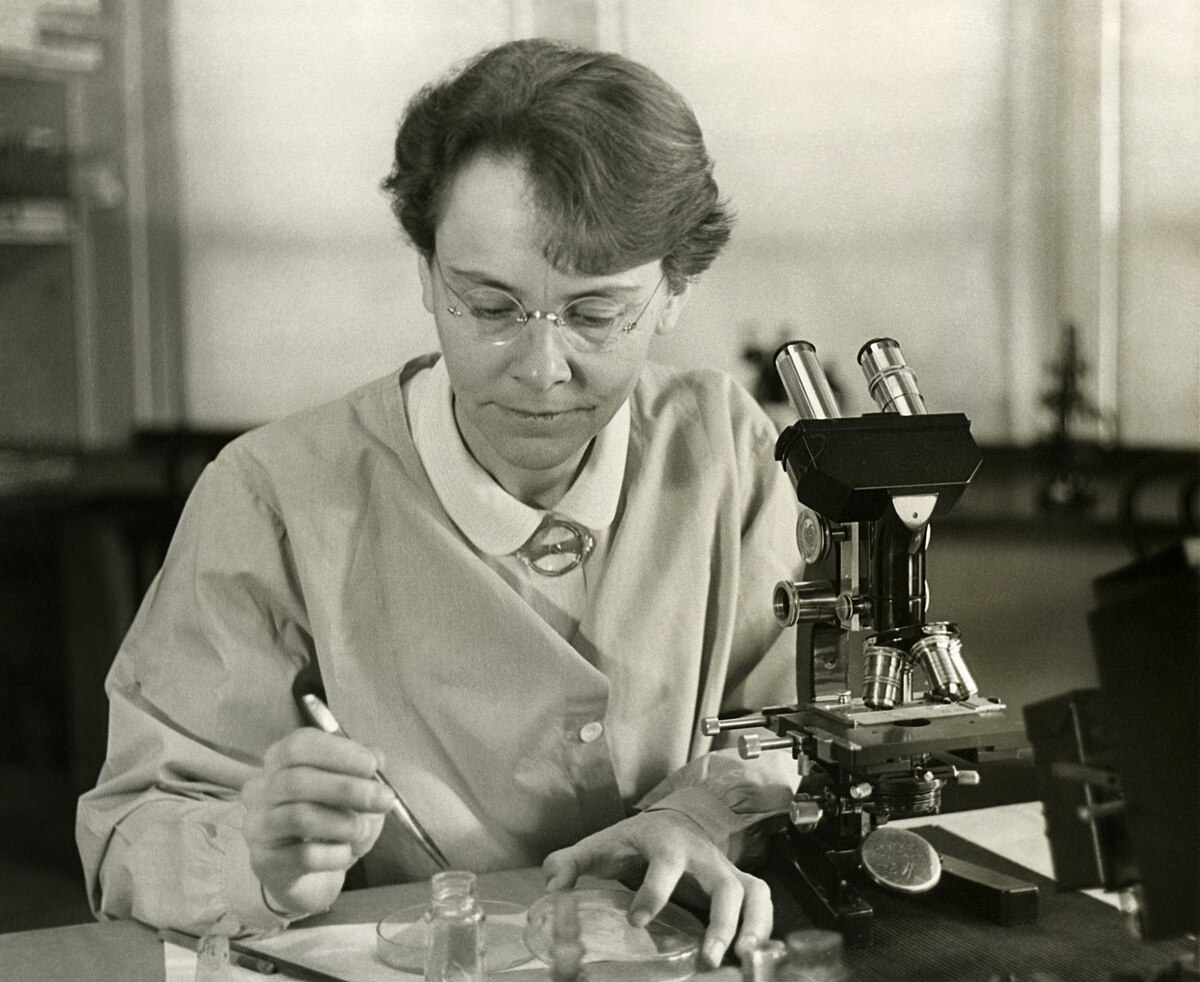Picture a scientist. Not a specific scientist, just a generic scientist. What image comes to your mind? What is the scientist wearing? How tall are they? What age?
What ethnicity?
What gender?
The scientist that pops into my head is a middle-aged, White, male. He wears a lab coat and glasses. He’s relatively thin, and has an average height. He’s a bit unkempt, with messy hair and an unshaven face.
He is a scientist.
When I went to science classes in school, I opened my textbook, looked around the room, and these are the faces I saw:


He. Him. Sir. Mister. Scientist.
No doubt, these men made huge contributions to science. These men impacted the way we view and understand the world and the universe as we know it.
But where have all the women gone?

It’s well known that women are underrepresented in STEM professions. It’s not a matter of lack of interest; if 20% of engineering school graduates are women, but women only make up 11% of practicing engineers, so, again I ask: where have the women gone?
I didn’t learn about Rosalind Franklin until my Freshman year in college. The only female scientist that came to mind was Marie Curie, and the only thing I could really say about her is that she died from radiation. Oh, and that she worked with her husband, Pierre.
And we wonder why women are so underrepresented in STEM professions…
Right now, I am double majoring in Biology and Adolescent and Young Adult Life Science and Chemistry Education. Some people ask me, “Why are you double majoring if you just need the one degree to be a teacher, anyway?”
Usually I just say, “I just really like science.” This isn’t a lie, but the more truthful answer is, “Because I want to prove to myself that I can be a scientist am a scientist and a teacher.” My male science teachers looked like scientists to me. My female science teachers just looked like teachers. In reality, my brain was just trained to associate scientist with male, and because of that, some says, I doubt that I can be a scientist.
How do we change that association?
It starts in schools.
- Textbooks. Most of the images of scientists I had came from textbooks, and like I mentioned before, those textbooks featured the contributions of male scientists. It’s not like there are no female scientists to feature. We could easily talk about Rosalind Franklin as much as we talk about Watson and Crick. I’ve heard the excuse, “She doesn’t get credit because she had died by the time Watson and Crick received their Nobel Prize.” I would just like to point out that Gregor Mendel received credit for his work long after he had passed away (I am happy to say the most recent version of my Genetics textbook does mention Rosalind Franklin’s contribution). If you find that your text or readings lack women scientists, find outside sources to use to make sure students are exposed to women scientists- there are many resources out there!
“Illustrator Rachel Ignotofsky’s book is a clever introduction to women scientists through history.” – https://t.co/mjFGjobwYt via @scifri
— STEMinist (@steminist) July 18, 2016
- Posters/Examples. My sixth grade biology classroom was visually appealing; there were animals everywhere, and posters covered the walls. There were the rabbits Albert and Einstein, the rat Darwin, and the Gecko Galileo. The posters featured male scientists, as well. Naming class pets after female scientists can indirectly expose students to female scientists, and may lead them to want to learn more about these women. Use posters in your classroom that feature minority and female scientists.

- Pronouns. I’ve grown up hearing and using the word “guys” to describe a group of people. I never intentionally mean to exclude women in using this, but it does inherently disregard half of the population. Simply saying “guys and girls,” or using more inclusive terminology like “future scientists” can fix this problem.
- Classroom management. Be sure to give male and females equal opportunity to lead in team projects and discussions. Do not allow students to interrupt one another, and be careful not to interrupt a student while he or she is responding. Women are more likely to be interrupted by men, making her feel like what she has to say is less important. Not allowing interruptions teaches respect and lets students know that everyone’s response is important.
- Bring minority scientists to life. Dress up and portray a minority scientist for a day, or have students each portray a minority scientist for a day. This type of visual is engaging, fun, interactive, and helps students remember these minority scientists. A few may even be surprised to find out that they relate well to a scientist!




She. Her. Miss. Missus. Scientist.For the scientist doubting herself: you are a scientist, following in the footsteps of many women. You are capable. You are an inquirer, a problem solver, and a thinker. You can do it, because you are a scientist.

You would be so excited to read Nobel Prize Winning Women in Science. It’s on my shelf in Hughes and you’re welcome to check it out! Great work MM!!! https://www.amazon.com/Nobel-Prize-Women-Science-Discoveries/dp/0309072700
That looks awesome! I will check it out for sure!
Meghan,
I’m absolutely kicking myself for not thinking about the representation of scientists in textbooks! These huge symbols of knowledge and reliable information are a big part of kids’ lives in the classroom, and I’m certain that female scientists are underrepresented in most. I also really liked your point about classroom management as well. It’s one thing to say “yeah, sure, we’re all equal or whatever” and another to actually stand up for your ideals and make sure everybody’s getting what they need. Awesome work!
Aesa
Meghan,
This post is incredibly powerful. The post itself showed the transition from an inequitable scene into an equitable scene. I really liked the fact that you included the statement “no doubt, these men made huge contributions to science.” Often times when discussing equity, the narrative is so focused on getting the “non-traditional” in the forefront that the others are forgotten. However, as you showed throughout your post, all persons are important, and it is crucial for us as teachers to make sure everyone has the ability to pursue their passions and bring out their fullest potential.
Meghan,
I really liked the approach you took with the pronouns. I also really like the graphics and statistics you included. In your writing it is very evident that this is a topic that you are very passionate about! I am glad that you let your emotions show in this blog.
I would like to know how you would try and reach your other minority students? You focused mainly on women so I would like to know how you would reach others.
Shay-
Thank you for your feedback!
To reach other minority students, I would use similar strategies, such as having posters and examples in my classroom, and looking for outside resources to include if the textbook lacks representation from certain groups. From year to year or place to place, the scientists used may differ. I would also try to portray these scientists, as well. If I have students research different scientists, I would urge them to do their research and choose a scientist to whom they relate. They may choose to focus on gender, sexuality, or ethnicity. In this case, the student would have the freedom to choose a scientist that interests them.